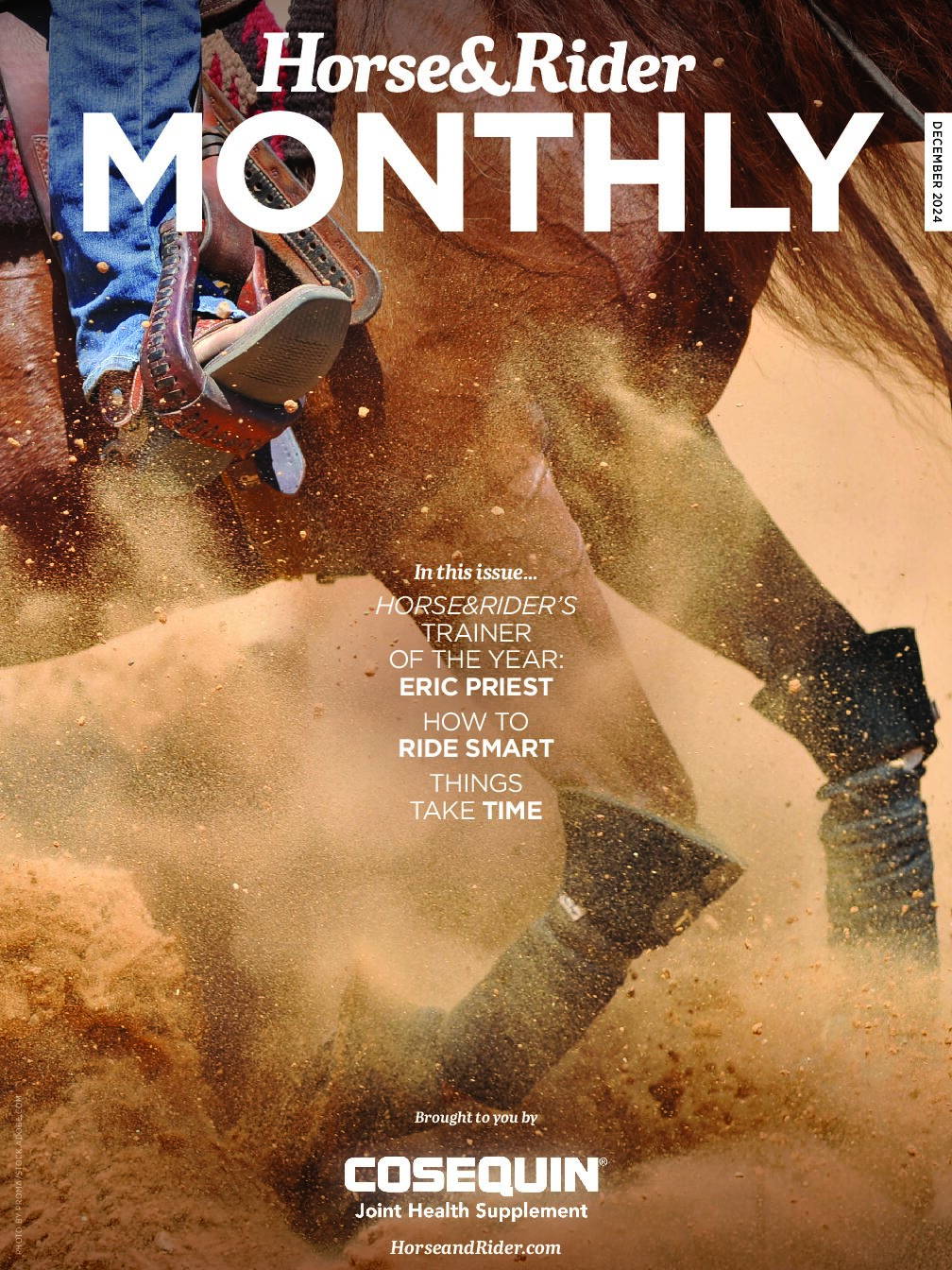I mentioned the flat, hairless area of skin by the horse’s eye the first time I met my client. “Looks like a sarcoid tumor,” I told her. “We should probably do something to treat it now, before it gets too big—especially in that location. I’d hate to see it grow to involve his eye.”
[READ: Common Equine Skin Problems]
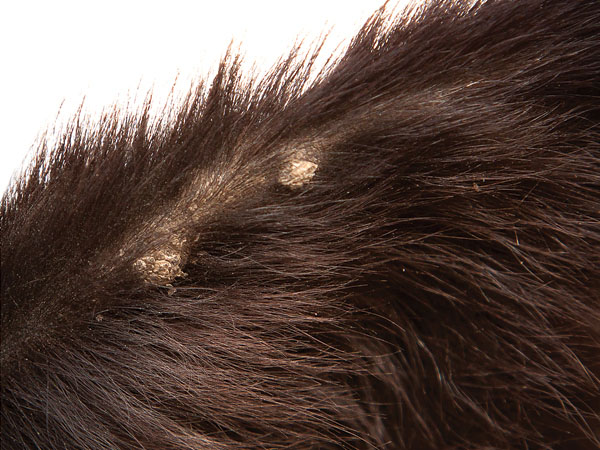
“Oh, no,” she said. “It’s always been there, it’s just a little scar.” Not convinced, I suggested she keep close watch of the area, and call me right away if the hairless area changed in size or appearance. Years went by. Each time I saw this horse, I mentioned my concerns. And at each visit, his owner assured me it was nothing to worry about.
Until, one day, the odd area grew. And it grew fast. Before the owner even got around to calling, the once small, flat, hairless area had turned into a golf ball-sized mass, and her horse’s eye was bulging. Sure enough, what was once a simple hairless patch of skin had morphed into an aggressive sarcoid tumor.
Major surgery and months of chemotherapy later, we did save the eye—but not without significant worry and expense. The lesson? Sarcoids are sneaky. Not only that, but they also seem to have a mind of their own. They masquerade as scars, warts, or a little spot of fungus. They’ll sit unchanged on your horse’s skin for years, until one day they decide to grow—and fast!
I’m going to teach you basic facts about sarcoids. It’s worth your while to study up, because sarcoids are the most common type of tumor found in horses. I’ll tell you exactly what they are, how they form, and how they behave. Most importantly, you’ll learn how to recognize a sarcoid, and why it’s so important to attack one before it’s too late.
Sarcoids 101
Sarcoids have been recognized in horses since the early 1900s. And they’re so common that if you own a horse, chances are you’ll see one somewhere, someday. We’ve learned in the past several decades that the bovine papilloma virus (BPV) is a likely underlying cause. Studies show that between 80 and 90 percent of tumors contain genetic material for this common cattle virus. What we don’t know, however, is exactly how this virus is transmitted to your horse.
Although sarcoids aren’t malignant in the classic sense (they don’t spread to distant locations in the body), they certainly can be malignant in their behavior. More aggressive tumors will grow quite rapidly, wreaking havoc on local tissues. And they also can be quite difficult to eradicate, often reappearing after treatment, even madder than before.
Sarcoids can appear in almost any location on your horse’s body, with the genital areas, chest, face, and legs being most common. A sarcoid on your horse’s face, especially around his eyes, is likely to be the most aggressive and difficult to treat.
Sarcoids are so common that almost any horse can be at risk. You should watch yours carefully. While most tumors are more prevalent in older horses (the aging process increases risk of “cells gone bad”), sarcoids are most commonly seen in animals under the age of 7. This supports the theory that there may be a genetic factor involved. In fact, if your horse is a Quarter Horse, his likelihood of developing a sarcoid tumor increases dramatically. Sarcoids also may be more common (and more difficult to treat) in a horse with a compromised immune system—possibly in part because of their association with BPV. Finally, sarcoids commonly develop in locations where old wounds or scars are found.
What’s the biggest risk? If a sarcoid appears but goes unrecognized (and untreated), it can become more and more aggressive over time—and even harder to get rid of. If treatment fails at first, the tumors are likely to become even more persistent. That’s why it’s so important that you learn to identify a sarcoid when it first appears so you can get it treated immediately and effectively before it’s too late.
[READ: Horse Lumps & Bumps]
It’s a Wart…It’s a Scar… It’s…
…A sarcoid! Historically, four types of sarcoid tumors were described, beginning with the most benign, and progressing to the most aggressive: occult, verrucous, nodular, and fibroblastic. Mixed sarcoids are also seen, that share the characteristics of all the other types. In addition, the term malevolent has been used to describe very aggressive sarcoids that grow and spread over extensive areas of your horse’s body. It’s clear why early (and effective) treatment and careful monitoring are so important.
The following pictorial guide will help you identify the four basic sarcoid types.
Occult (flat)
Looks like: A flat or slightly bumpy patch of hairless skin. May be scaly on the surface.
Mistaken for: Hair loss due to a tack rub, scar, fungus (ringworm), allergic reaction.
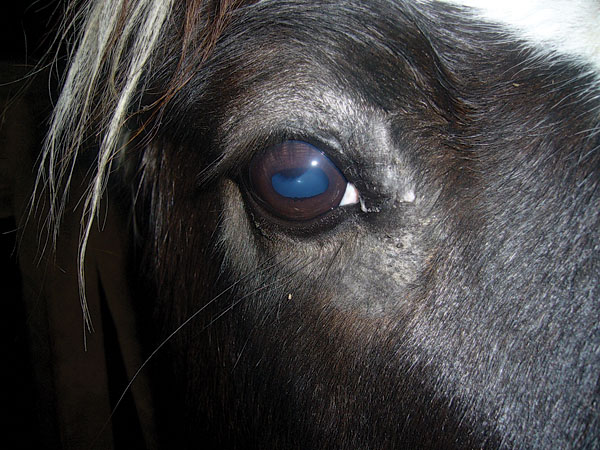
Verrucous (warty)
Looks like: A patch of hairless skin with raised bumps, and thick scales or crusts.
Mistaken for: Scar, fungus (ringworm), warts.
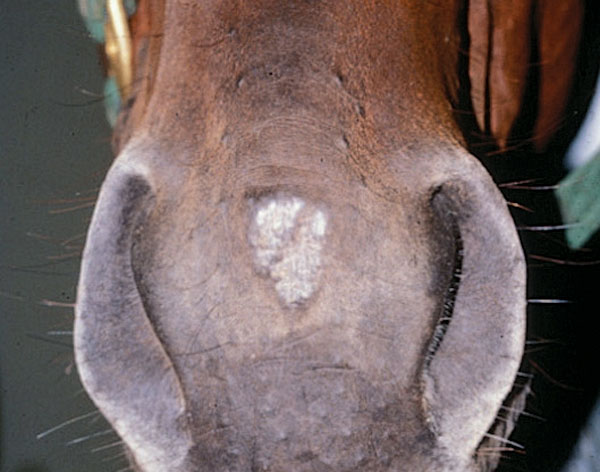
Nodular
Looks like: A freely moveable mass under the skin. May have normal skin over top or an ulcerated surface.
Mistaken for: Cysts, pressure/friction bump (like those bumps that form under the saddle or cinch), scar tissue remaining from an old injury or wound.

Fibroblastic
Looks like: Cauliflower-like mass of tissue, often with an ulcerative surface.
Mistaken for: Excessive granulation tissue (proud flesh); large, old scar remaining from an injury or wound.
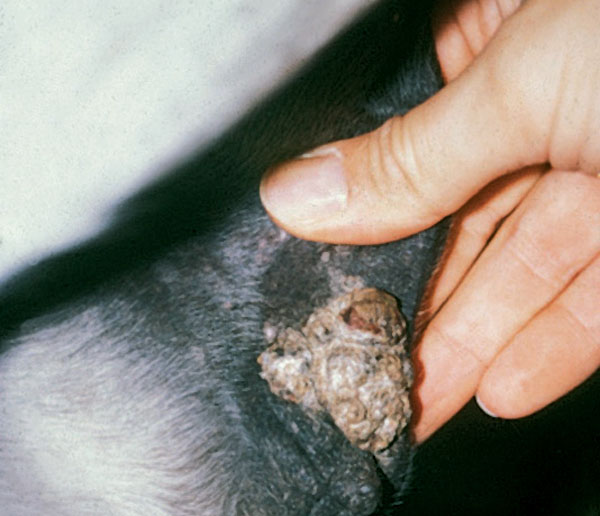
What to Do?
If you suspect your horse has a sarcoid tumor, call your vet. To make an accurate diagnosis, your vet must perform a biopsy—meaning he’d take a piece of tissue from the tumor and submit it for analysis. This can be a dicey proposition for a sarcoid, however, because removing even a small amount of tissue can often cause the tumor to become more aggressive.
In some situations, a needle aspirate can be performed (cells are collected from the tumor using a needle and syringe) and examined under a microscope to look for characteristic sarcoid cells. This procedure may be less likely to aggravate the tumor than a biopsy, but is also less likely to be diagnostic. Recent work has also been done with testing bits of tumor tissue for the genetic material of BPV. Unfortunately, this type of testing has a high incidence of false-negative results (the tissue tests negative, even if a sarcoid really is present).
Because of the risk of making a sarcoid “angry” from a biopsy, and a lack of other reliable diagnostic choices, your vet may make a presumptive diagnosis based on the appearance of the tumor.
If your horse’s sarcoid is very small and in a good location (such as the chest, where it isn’t likely to cause troubles), your vet may even suggest a conservative approach (“benign neglect”) at first. You’ll measure the tumor carefully, and record its size and appearance on a calendar at least once a month. If the sarcoid stays the same, treatment may not be recommended. But if it shows any sign of change, especially if it’s getting bigger, you should start treatment right away.
If “benign neglect” isn’t an option, what’s the most effective treatment? If only we knew! Because nothing seems to work 100-percent of the time, a wide variety of options exists. Many tumors will require multiple different treatments before they can be conquered. Here are just a few of the most common treatments used for sarcoid tumors.
[READ: Horse Hives]
Surgical removal: Your veterinarian will cut away the sarcoid and surrounding skin, taking care not to leave any tumor tissue behind. If it’s available, laser surgery may be more effective because it can destroy tumor cells or viral particles on the margins of the wound.
Pros: Surgical removal is often very cost-effective and results in less scarring than some other methods. When tumors are very large, it may be the only effective option.
Cons: Tumor recurrence following surgical removal is common (as high as 80 percent has been reported). It’s theorized that viral particles remaining in the tissues stimulate the tumor to regrow, sometimes even more aggressively than before. Other treatments (such as chemotherapy) may still be required after surgery is complete to minimize the chances of recurrence.
Cryosurgery: Liquid nitrogen is used to freeze the tumor and kill tumor cells. For larger tumors, temperature probes may be used to ensure that cold enough temperatures are achieved in tissue at the center of the tumor to be effective.

Pros: Cryosurgery is inexpensive and often very effective, especially on small or superficial tumors. In some cases, a tumor in a location that’s remote from the area being treated will regress spontaneously after treatment—possibly because of the horse’s immune response.
Cons: As the tissues die, they will develop open sores and scabs that heal over time, often leaving scars. Multiple treatments usually are necessary, and it can be difficult to recognize redeveloping tumor tissue within remaining scars.
[READ: Groom to Beat Equine Skin Problems]
Chemotherapy: Most commonly, a chemotherapy drug called cisplatin is inserted into the sarcoid to kill tumor cells. It can either be injected in a liquid form (mixed with oil so it will remain in the tissues for an extended period of time) or inserted through a very small incision in the form of a cisplatin-impregnated bead that dissolves slowly in the tissues. Cisplatin is commonly used to treat surrounding tissues after surgical removal to minimize the chance a tumor will regrow.
Pros: When it is effective, tumors often regress completely with no residual scarring. If applied appropriately, up to 90-percent success rates are reported.
Cons: Cisplatin is expensive, and multiple (as many as five) treatments are required for initial treatment of a tumor. It’s also toxic and complicated to handle.
Imiquimod (Aldera): This topical cream modifies the immune system and has anti-viral and anti-tumor effects.
Pros: This cream can be applied by the owner and, when it works, it usually has good cosmetic results. It’s easily obtained at most pharmacies.
Cons: Prolonged treatment is necessary; cream needs to be applied as often as three times weekly, and it can take as long as four months for the tumor to regress. The tumor can look worse before it gets better because of tissue reaction. Treatment can get expensive, especially for larger tumors.
Topical bloodroot (Xxterra): This topical cream burns and destroys tumor cells and surrounding tissues over a course of several applications. The treated area will typically slough away seven to 10 days after a course of treatment.
Pros: This is an inexpensive treatment that usually can be applied by an owner. Success rates can be good, with persistent treatment.
Cons: Daily treatment for a period of five days is necessary, and often needs repeating. Reaction to the cream can include swelling and pain, making the horse difficult to treat after the first few applications. Scars commonly result in the treated area.
The take-home message: Sarcoids are extremely common—and very sneaky. Watch your horse carefully, and call your vet if you see an unusual hairless area, bump, or wart-like growth. Although these tumors aren’t likely to be deadly, they can cause serious problems for your horse. Early, aggressive, and effective treatment is essential for success.



